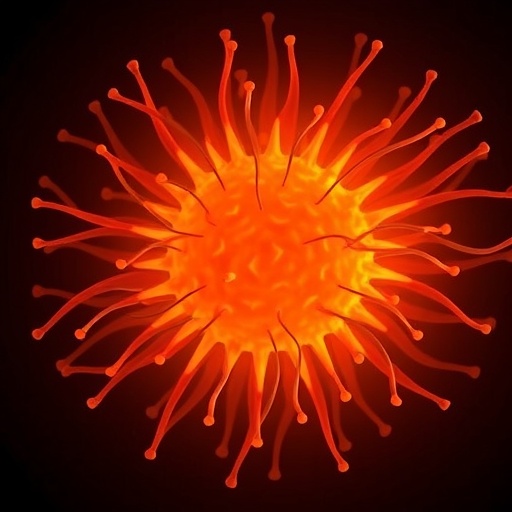
In a groundbreaking recent study, researchers have unveiled a promising hybrid molecule, SA-10, which, when formulated into a nanosuspension with poly(lactic-co-glycolic acid) or PLGA, demonstrates substantial neuroprotective effects on retinal ganglion cells (RGCs). This innovative approach holds potential implications for treating various retinal pathologies, especially those associated with neurodegeneration, and signifies a significant advancement in the field of neurobiology.
The research, spearheaded by an interdisciplinary team, highlights the detrimental effects of neuronal injury on both human and rodent retinal ganglion cells. Retinal ganglion cells serve as crucial neural components, transmitting visual information from the retina to the brain. Damage to these cells often leads to irreversible vision loss, making their protection a vital area of investigation within the realm of neurodegenerative diseases.
SA-10 stands out due to its unique chemical properties, designed to facilitate targeted delivery and enhanced stability when combined with PLGA. This hybrid molecule works by crossing the blood-retinal barrier, which is notoriously challenging for therapeutic agents. The study authors conducted comprehensive tests to ascertain the efficacy of SA-10’s nanosuspension, employing both in vitro and in vivo models to gather conclusive data on its protective capabilities.
It was found that the SA-10 PLGA nanosuspension offered remarkable neuroprotection against various forms of neuronal injury. Through intricate experiments, including administered oxidative stress and glutamate-induced toxicity, researchers witnessed a significant decrease in cell death rates among treated groups. These results underline the potential of hybrid molecules like SA-10 to mitigate injury pathways that elicit severe consequences for retinal ganglion cells.
The mechanisms underlying these protective effects are multifaceted. Researchers postulate that SA-10’s ability to modulate inhibitory pathways involved in inflammation and apoptosis contributes significantly to its efficacy. By subsequently decreasing pro-inflammatory mediators and enhancing synaptic plasticity, the hybrid molecule affords RGCs a protective environment, thus facilitating cellular repair and regeneration. This novel discovery heralds a new era in neuroprotective strategies, leveraging biomolecular engineering to forge pathways for clinical applications in vision preservation.
Future studies are likely to delve deeper into optimizing the dosages of SA-10 and characterizing its pharmacokinetics and long-term efficacy. Determining the optimal administration routes alongside identifying possible side effects are critical steps towards ensuring the translational potential of this promising investigational drug in therapeutic settings. The implications of this research stretch beyond immediate neuroprotection; they may also provide vital insights into broader strategies for combating neurodegenerative diseases across various fields of medicine.
Moreover, the exploration of PLGA as a carrier for neuroprotective molecules opens new avenues for research and development. Its biocompatibility and biodegradable nature make it an attractive choice for delivering active compounds directly to the nervous system. Scientists are now aiming to enhance the stability of the nanosuspension further, examining different polymer combinations and molecular modifications to optimize the efficacy of the therapeutic delivery system.
The team behind the study, composed of experts from various scientific domains, underscores the importance of interdisciplinary collaboration in tackling complex biological problems. Their combined expertise enabled the integration of cutting-edge molecular design with robust biological testing, driving forward this essential research agenda. As they progress, the researchers are keen on engaging with pharmaceutical partners to facilitate the translation of their discoveries from the lab bench to actual clinical applications, emphasizing a commitment to advancing retinal health globally.
Critically, the overarching goal remains to extend the lifespan and preserve the functionality of retinal ganglion cells, ultimately combating vision loss caused by retinal degeneration. As research continues, both preclinical and clinical trials are anticipated to emerge, setting the stage for a potential breakthrough in treating debilitating ocular conditions. In this context, the community awaits eagerly, inspired by the tangible prospects this hybrid molecule presents for future medical therapies.
As the scientific world grapples with the accelerating prevalence of retinal diseases linked to aging populations, SA-10’s potential impact cannot be overstated. Should ongoing studies validate the current findings, we can envision a future where patients with critical visual impairments have access to innovative, effective therapies grounded in novel neuroprotective strategies. The possibility of changing lives through the advancement of ocular health is a compelling motivation that propels researchers to refine and develop such groundbreaking approaches.
Undoubtedly, this exploration of SA-10 and its PLGA nanosuspension encapsulates the essence of scientific innovation, demonstrating that combining molecular engineering with biological insight can yield promising therapies for some of the most challenging medical conditions today. As attention shifts toward transforming these research findings into real-world treatments, the commitment to enhancing vision health for numerous patients is steadfast, signaling a positive trajectory in the field of neuroscience and ocular therapeutics.
As we venture further into this new era of hybrid molecular applications, the future of neurobiology appears brighter than ever. The collaborative spirit demonstrated by the researchers serves as a beacon of hope, reminding us of the potential within the scientific community to tackle complex challenges head-on. The implications for humanity are profound, and as we unlock the secrets of hybrid molecules like SA-10, we move closer to revolutionizing treatment strategies for neurodegenerative conditions across the spectrum.
In summary, the development and application of SA-10 within PLGA nanosuspensions represent a significant leap forward in neuroprotective research. With ongoing studies and trials, the potential for this hybrid molecule to contribute meaningfully to ocular health remains a compelling narrative in the realm of vision science, signaling a hopeful future for countless individuals affected by retinal degeneration.
Subject of Research: Neuroprotective effects of SA-10 in retinal ganglion cells
Article Title: Hybrid molecule SA-10 and its PLGA nanosuspension protect human and rodent retinal ganglion cells against neuronal injury
Article References:
Pham, J.H., Zhang, W., Le, KT.T. et al. Hybrid molecule SA-10 and its PLGA nanosuspension protect human and rodent retinal ganglion cells against neuronal injury.
BMC Neurosci 26, 51 (2025). https://doi.org/10.1186/s12868-025-00971-7
Image Credits: AI Generated
DOI: 10.1186/s12868-025-00971-7
Keywords: SA-10, PLGA, retinal ganglion cells, neuroprotection, neurodegeneration, ocular health, hybrid molecules.
Tags: blood-retinal barrier crossinghybrid molecule therapyin vitro and in vivo studiesinterdisciplinary research in neurobiology.neurodegeneration researchneuroprotective effectspoly(lactic-co-glycolic acid)retinal ganglion cells protectionretinal pathologies treatmentSA-10 nanosuspensiontargeted drug delivery systemsvision loss prevention




